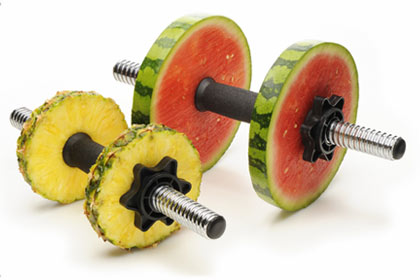- February 20, 2016

In terms of what foods you should and should not eat, remember that calories matter far more than specific foods. Adequate macro- and micro-nutrition are indeed part of a healthy diet, but appropriate caloric intake is by far the most important rule regardless of the source and whether or not the food is "natural", "whole", "clean", or "dirty". Eating too many of any form of calories, whether it is from whole foods or not, will cause these problems. Researchers from Newcastle University discovered in 2011 that Type 2 diabetes can be reversed by an extreme low calorie diet alone. In terms of the hormonal response to a single meal, a fast-food meal has been shown to elicit a similar response to an equivalent organic one.
The only way to keep your health is to eat what you don't want, drink what you don't like, and do what you'd rather not.
- Mark Twain
"Macros" are macronutrients, these include dietary carbohydrates, proteins, and fats. Alcohol is the fourth macro, but it is not usually allotted for on it own and its consumption typically comes at the expense of your carbohydrate allotment. The key to your macro split is knowing your total calorie intake needs and that protein and carbohydrates have roughly 4 Calories per gram, while fat contains around 9 Calories per gram. (Alcohol being ~7 Calories/g) While everyone has different needs and preferences for their macro-nutrient breakdown, the following is a generic guide to get you started. We calculate macros from the ground up, but always in the context of total calorie intake.
If calories are king, protein is queen. There's a large body of evidence showing adequate protein intake as key to achieving your body weight and composition goals. One gram of protein per pound of body weight is the traditional recommendation for protein intake. However, consider this the upper end of target intake, with the suggested range spanning from 0.45-1g/lb of total body weight.
Fats are essential for bodily functions including metabolism, brain function, and hormone production. For this reason, despite decades of low-fat dieting trend, fat calories are not any worse than other calories. After your essential fatty acid needs are met in the diet, the remaining allocation for fat intake is largely determined by personal preference. A general rule of thumb starting point is 0.4g-0.5g/lb of body weight.
Now that the essential macros have been calculated, we must refer back to the goal calorie intake to tie it all together. The remaining allotment for carb intake is determined by subtracting your goal protein and fat from your calorie intake. Basically, whatever caloric intake is left over after determining your protein and fat needs is used by carbohydrate consumption.
Remember that protein is the cornerstone of any macro split. Once you set your protein goal, the remaining allocation of fats and carbs are largely personal in nature. Don't be afraid to experiment with different intakes to find the set up that works best for your goals. It's important to base your macro calculations on your own body stats, calculating macros as a percentage of caloric intake can create situations where some intakes are inadequate or overkill. Also, if you are significantly overweight, using your total body weight would be inappropriate for this activity and would skew your macro split. In this instance, instead base your calculations on lean body mass. Conversely, if you are significantly underweight, you'll want to use your goal body weight.




